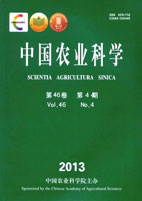-
The Productive Advantages and Formation Mechanisms of “Indica Rice to Japonica Rice”
- ZHANG Hong-Cheng, ZHANG Jun, GONG Jin-Long, CHANG Yong, LI Min, GAO Hui, DAI Qi-Gen, HUO Zhong-Yang, XU Ke, WEI Hai-Yan
-
Scientia Agricultura Sinica. 2013, 46(4):
686-704.
doi:10.3864/j.issn.0578-1752.2013.04.004
-
 Abstract
(
826 )
Abstract
(
826 )
 PDF (635KB)
(
1160
)
PDF (635KB)
(
1160
)
 Save
Save
-
References |
Related Articles |
Metrics
【Objective】 The objective of this study was to reveal the productive advantages of “indica rice to japonica rice” and summarize its physiological ecological mechanisms systematically from the viewpoint of cultivation. 【Method】 A field experiment was conducted with representative japonica rice varieties (Wuyunjing24, Xudao3, Lianjing7, Xuyou733, etc.) and indica rice varieties (Liangyoupeijiu, Ⅱyou084, Xinliangyou6380, Yangliangyou6, etc.) as materials in rice-wheat cropping areas (Yangzhou, Xinghua, Donghai of Jiangsu) in the lower reaches of the Yangtze River in 2010-2011. Difference of growth security, grain yield, quality, utilization of temperature and solar radiation, dynamics of population growth, plant type and lodging characteristics between japonica rice and indica rice were studied systematically. 【Result】 Under the simplified cultivation conditions of mechanical and swing transplanting, the growth security of japonica rice was better than indica rice, for japonica rice possessed longer milky stage and the resistance to low temperature at the later period compared to indica rice. The average yields of japonica rice in both years were, 10.90 and 10.87 t•hm-2 in Yangzhou, 10.93 and 10.65 t•hm-2 in Xinghua, 10.49 and 10.41 t•hm-2 in Donghai, higher than indica rice significantly. Grain filling characteristics of japonica rice exceeded indica rice, which was the key point of harvesting high yield of japonica rice, with the roughly same level of population spikelets or slightly less. Milling quality and cooking and eating quality of japonica rice were better than indica rice significantly, while the appearance and nutritional quality followed an opposite tendency accordingly. The physiological ecological characteristics of productive advantages of “indica rice to japonica rice” were as follows. Firstly, growth duration of japonica rice was longer than indica rice significantly and japonica rice was more adapted to cool weather at the later period of grain filling, increasing utilization of temperature and solar radiation and ensuring japonica rice maturing safely. Secondly, strong photosynthetic capacity of japonica rice at the later period increased dry matter weight and total filling. Thirdly, japonica rice improved the resistance to cold and premature senescence, and lodging due to strong root, stem and sheath, guaranteeing the enrichment and support of large sink. 【Conclusion】 Under the mechanizing simplified cultivation conditions, japonica rice, not only matured safely with strong growth advantages at the later period, but also achieved high grain yield, quality, efficiency and comprehensive productivity because of making full use of temperature and solar radiation in comparison to indica rice.









